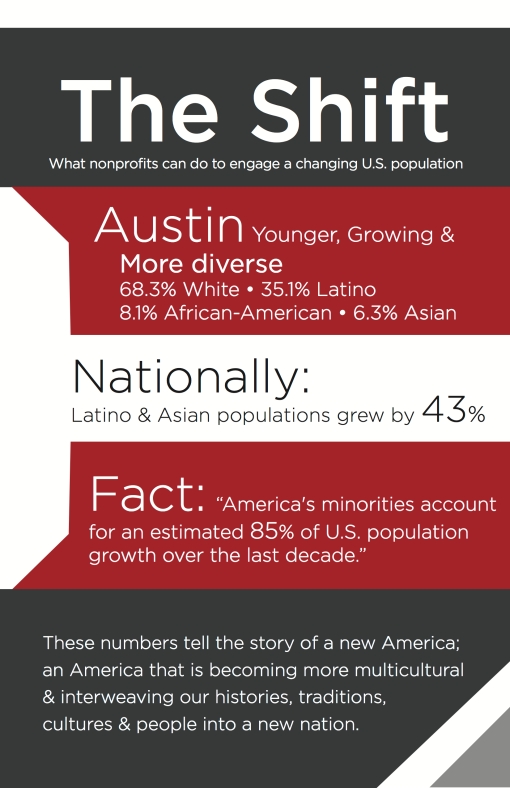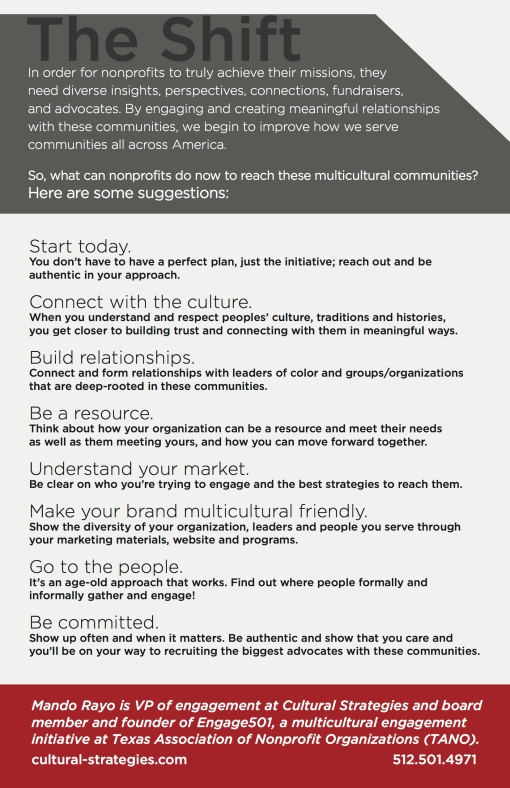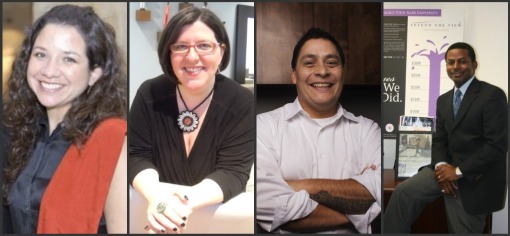Mando Rayo moved his blog to Tumblr. Follow him at http://elmundodemando.tumblr.com.
The Shift: How Nonprofits can Engage a changing U.S. population
3 11 20112011 is the year of The Shift. We’re seeing a lot of changes happening in Austin, throughout Texas and America. Unless you’ve been hiding under a rock, you know the population trends are changing in every community across our nation and forming the New America. An America that is younger, growing and more diverse. This year, with the support of TANO, Austin Community Foundation, Sooch Foundation and others, I’ve had the opportunity to launch Engage501 and connect with many nonprofit leaders across Texas and equip them with strategies that will help them build relationships with Latino and Multicultural communities that will ultimately create fundraisers, board members, volunteers and advocates within these communities. It’s been a great experience connecting with nonprofits, learning about their successes and areas where they need help, and I look forward to continuing the conversation.
Want to get started? Read my article on The Shift.
The Shift: What nonprofits can do to engage a changing U.S. population
By Mando Rayo
In case you’ve been under a rock, you should know that right now we’re on the verge of a major population shift, and your organization may not be ready.
The shift is this: According to the most recent Census brief, “Overview of Race and Hispanic Origin 2010,” both the Hispanic and Asian populations grew by 43 percent. Consider the fact that “America’s minorities account for an estimated 85 percent of U.S. population growth over the last decade” and more than half of the increase is due to the Latino population, which is now at 50.5 Million. (*U.S. Census) These numbers tell the story of a new America; America that is becoming more multicultural and interweaving our histories, traditions, cultures and people into a new nation.
To say that nonprofits aren’t ready for this shift implies that nonprofits don’t already engage this population, at least not as donors, board members, volunteers and advocates. For many nonprofits, it’s hard to visualize more minorities on this side of the table. But at the same time, we must also questions whether we’re serving these populations as best we can. If we’re not connecting with those who can help us, why would we assume we’re reaching all of those who need us?
This is not an obstacle, it’s an enormous opportunity.
By engaging and building trust with Latinos, African-Americans, Asians and all diverse populations, nonprofits stand to benefit from authentic leadership on their board that goes beyond tokenism, fundraising opportunities that have gone untapped by mainstream organizations, increased awareness and engagement with services, programs and volunteer activities and relevance in a growing multicultural America.
In order for nonprofits to truly achieve their missions, they need diverse insights, perspectives, influence, connections, fundraisers, and advocates and by engaging and creating meaningful relationships with these communities, we begin to improve all communities across America.
As we know when we build trust with volunteers and donors, they are more likely to give even more of their time, talent and treasure. A few fundraising examples include $1 Million raised with low wage workers through United Way and local grocer-HEB, $125,000 raised through what might be the first Hispanic giving circle in the country, FuturoFund Austin and nationally, $4.7 Million raised with a Spanish radio telethon with Univision and St. Jude’s Hospital.
Now let’s get practical. What can nonprofits do now to engage with these multicultural communities? Here are some suggestions:
Start today. You don’t have to have a perfect plan, you just to do it; reach out and be authentic in your approach.
Connect with the culture. When you understand and honor peoples’ culture, traditions and histories, you get closer to building trust and connecting with them in meaningful ways. Take time to understand peoples’ backgrounds, experiences and motivations. Remember, multicultural groups are not monolithic.
Build relationships. If you’re looking for board members, build relationships with formal and informal leaders from these communities. Don’t just go with the usual suspects, reach out to new and upcoming leaders. Connect and collaborate with cultural groups and organizations that are deep-rooted in these communities.
Be a resource. Think about how your organization can be a resource to these communities. Take time to understand their needs, wants and aspirations. It’s about meeting their needs, your organizations’ needs and meeting in the middle or reaching the sweet spot. Once you hit the sweet spot, you can move forward together.
Understand your market. Be clear on whom you’re trying to engage and the best strategies to reach them. To reach young professionals, use leadership opportunities, social events and online networks; to reach families, be flexible and utilize family friendly activities and to reach new immigrants, utilize church networks and Spanish language media.
Make your organizational brand multicultural friendly. Show the diversity of your organization, leaders and people you serve through your marketing materials. It’s important to balance how you showcase the people you serve and your organization’s leadership; show how multicultural communities are contributing to your mission; don’t just show them as recipients of services. Understand that your organization might have to go through a change to become more multicultural friendly. You might have to implement changes in your board structure or in how you deliver your services.
Go to the people. It’s an age-old approach that works. Find out where people formally and informally gather. Sometimes it’ll be online via social networks and other times it’ll be at local community center or church. At first they’ll ask “what are they doing here” and as you build the trust, they’re going to be asking “why aren’t they here?”
Be committed. Show up often and when it matters. Be committed for the long-haul and show you have their best interest at heart. Don’t just outreach; engage people in the process. Be authentic and show that you care and you’ll be on your way to recruiting the biggest advocates with these communities.
###
Mando Rayo is vp of engagement at Cultural Strategies and board member and founder of Engage 501, a multicultural engagement initiative at Texas Association of Nonprofit Organizations (TANO).
Comments : 1 Comment »
Tags: african-american, asian, engagement, hispanic, hispanic philanthropy, latino, multicultural, multicultural marketing, nonprofit, philanthropy
Categories : culture, hispanic, latinos, Uncategorized
The New Philanthropists: Fundraising with Diverse Populations
12 08 2011

Comments : Leave a Comment »
Tags: african-american, giving, hispanic philanthropy, latino, multicultural, nonprofit, philanthropy
Categories : Uncategorized
Sustainability and Latinos
15 04 2011Last week I had the opportunity to share my perspectives on social equity, Latinos and the sustainability movement at the Go Green Conference. While we still need to change behaviors in the Latino community, it is important to also change perspectives within the sustainability movement. If you’re interested in learning about what I mean when I say “changing perspectives,” continue reading…
Sustainability and Latinos
By Mando Rayo
When you think of sustainability, the environment and going “green”, what comes to mind? Is it the conscious-minded people who chooses alternative transportation, recycles and grows their own veggies? Or is it the person who lives in the city but has agriculture in their family history, tends to multiple chickens and roosters and rides their bicycle to and from work because they have no alternatives? I think of the latter.
Even though you can’t help but walk through a minefield when making generalization about any demographic and/or ethnicity in America, there are certain realities that I invite you to ponder; new information that will make you at the very least reconsider the assumptions you make when running into certain sub-segments of the Latino market.
Let me expand.
Culture, Traditions and History
Among Latino and other sustainability is a very familiar concept, in fact, it’s goes back many generations. My grandparents and their grandparents before them, farmed and cultivated their lands with vegetables, fruits and the foods they needed to feed their families and make a living. In the kitchen, they developed and passed on traditions to the next generation including reusing plastic bags and foil paper and creating new dishes from a hodge podge of leftover items. These practices, often starting out of necessity, have become traditions and part of our culture. Among Latinos and especially those in low-income communities, you have to save where you can in order to provide for your family—you have to conserve. While many Latinos may not label themselves “green,” they actually are; they just don’t do it by definition, they do it because it’s a part of their culture.
Choice vs. Necessity
Is the construction worker who rides his bicycle to work going “green” or does he do it because of necessity? How many of us are afforded the choice to leave the car at home and ride our bikes to work or for recreational purposes? Do you consider people in low-income communities as environmentally-friendly because they ride the bus? You could. A lot of us, including myself, are afforded these choices but many Latinos and African-Americans that are living in poverty do not have the luxury to make these choices. For Latinos living in these conditions, it is a matter of necessity; the necessity to get to work, make a living, getting by and providing for their families. With necessity comes ingenuity. We see it in its simplest form by recycling plastic bags and foil paper, by washing and reusing them, or by repurposing old aluminum cans or glass jars for tools and containers and even art projects. While some Latinos, especially older generations, may not consider themselves environmentalist, many of them have been doing their part through culture and traditions.
Creating Inclusion
Sustainability and the organized environmental movement for the large part has been part of the mainstream. The poor and multicultural communities have not been part of this organized movement not because they’ve been intentionally excluded, but simply because not enough relationships and connections exist between these groups. Latinos and most multicultural communities do care about sustainability and doing their part to be “green”. However, they do it in their own informal way, rooted in cultural traditions and understandings. What organizations and businesses need to do is begin the process of understanding how these issues affect and are relevant to Latino communities. If they truly want diverse insights, perspectives, influence, connections, advocates, and $171 billion of Texas’ Latino buying power the organized environmental movement needs to take time to understand their needs, wants and aspirations. It’s about meeting their necessities, your organization/business’ needs and meeting in the middle or reaching the sweet spot. Once you hit the sweet spot, you can move forward together.
There are real connections between sustainability and Latinos. As we continue this work, we have to change perceptions as well as behaviors and start connecting the issues in more meaningful and relevant ways that include culture, traditions and experiences.
There are definitely situations in which these same Latinos, due to either lack of information or out of pure necessity are engaging in practices negative to the environment. These are opportunities for both nonprofit organizations and the business world as far as educating and empowering these individuals to take environmentally-friendly decisions.
Comments : 5 Comments »
Tags: environment, go green conference, green, hispanics, latinos, sustainability
Categories : environment, hispanic, latinos, sustainability
No Digital Divide Here: RISE Multicultural Series Tech Sessions
4 03 2011 Well, we still have some work to do but maybe the RISE Multicultural Series tech session hosts can help! Meanwhile, check out the sessions in full color! 😉
Well, we still have some work to do but maybe the RISE Multicultural Series tech session hosts can help! Meanwhile, check out the sessions in full color! 😉
The 2011 Multicultural Series features a great line up of session hosts from the Latino, African-American, Asian and many diverse communities. The Series opens doors to diverse communities in a welcoming, engaging and inclusive environment.
Click here to learn more about the Multicultural Series!
Technology sessions:
Cindy Casares: How to manage bloggers including yourself
Chin Chang: Building a united website
Magaly Chocano: Marketing your business in the mobile landscape
Lisa Goddard: Mapping the Un-mappable: Using infographics to inspire social change
Ricardo Guererro: How to use social media effectively for your business
Elias Hermida: Use Technology to Reach Hispanics
Vid Luther: How to hack your startup without writing a single line of code
Quamrul Mina: Building a cloud-based Online/OnDemand TV broadcast platform
Thomas Miranda: Innovation – What’s the Big Idea
Jette Momant: Socialize and localize your business
Jennifer Navarette: Business on the Go: Smartphones, iPads and Apps, OH MY!
Pablo Reyna : What is this cloud stuff?
Luis Sandoval: Diversifying your integrated media strategy
Nicole Torres-Cooke: The Strategy of Being Social Online
Jikku Venkat: Product Development & Technology Innovation in a Startup Environment: Doing it Cost-effectively
Comments : Leave a Comment »
Tags: african-american, entrepreneurs, entreprenuership, hispanic, latino, multicultural, riseglobal, technology
Categories : Uncategorized
RISE Multicultural Series: 60+ Latino, African-American, Asian Innovators y mas!
3 03 2011RISE Week is right around the corner, March 7-11 and the Multicultural Series is in full gear, representing entrepreneurs from all walks of life! The RISE Multicultural Series showcases the often missed diversity of the Austin entrepreneurial sector. Through this series, we’re ensuring that all ideas, perspectives and experiences are at the table. We have over 60 sessions in the series that range from start-up to nonprofit and social media to basic business essentials en Español! We did not do it alone though. We had the support of RISE leadership, Cultural Strategies, sponsors and community partners. Take a look at what’s in store for the 2011 RISE Multicultural Series and sign up for session or two!
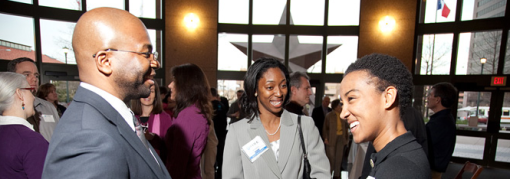
Sponsors
Partners
Mex Net Alliance (also sponsor of the Multicultural Series VIP Reception)
TiE Austin
Economic Growth Business Incubator
Minority Start-up Association of Texas
Soul Citi
Austin’s Black Newcomers Association
Austin Asian Chamber of Commerce
Urban Life and Style Magazine
National Society of Hispanic MBA
Asian American Chamber of Commerce
Multicultural Series sessions:
David Ansel: The Soup Peddler: A Real Life Bootstrapped Brand Story
Shetay Ashford: Taking the Plunge into the World of Social Entrepreneurship!
George Barlow: Real Estate Franchising and the Paradigm Shift
Bettina Bennett: What they don’t teach you at university about being a successful entrepreneur
Elizabeth Bert: Social Intelligence: Essential Skill for the 21st Century Workplace
Cindy Casares: How to manage bloggers including yourself
Chin Chang: Building a united website
Jorge Chavez: Sales Management for Private Business Owners
Sreekanth Chintala: Weekend Entrepreneur
Magaly Chocano: Marketing your business in the mobile landscape
Adil Dalal: Power of Visualization for Leaders
Keisha Dirkson: Experiencing the power of networking
Kai Dupe: The Road Less Traveled: Important routes to entrepreneurship that should be explored
Helena Escalante: Prosperity and abundance mindset for the entrepreneur
Manuel Escobar: The basics of business and corporate law for entrepreneurs
Lisa Goddard: Mapping the Un-mappable: Using infographics to inspire social change
Ricardo Guererro: How to use social media effectively for your business
Manish Gupta: Social Entrepreneurship: Doing Good is good business!
Hopeton Hay: African American Entrepreneurship: Learning from the Past, Building for the Future
Victor Henry: Commercial Leasing from the Tenant’s Perspective
Elias Hermida: Que Necesito saber antes de poner un negocio?
Diego Huerta: Do everything with Nothing
Paula Hui: Building your business through community involvement
Gopal Krishnan: Progressive building of organizational capabilities in line with a company’s growth
Victor Landa: Building from the market sweet spot: How finding your niche is half the battle
Zakiya Larry: Avoiding the ‘Deer in Headlights’ Syndrome: Media Training
Vid Luther: How to hack your startup without writing a single line of code
Elijah May: Just Crazy Enough to Work: Non-traditional marketing strategies for non-traditional results
Juan Carlos Mercado: Tips for Making, Keeping Business Resolutions
Eli Mercer: Opportunities and Trends in Hispanic Entrepreneurship
Quamrul Mina: Building a cloud-based Online/OnDemand TV broadcast platform
Thomas Miranda: Innovation – What’s the Big Idea
Jette Momant: Socialize and localize your business
Martin Montero: Ingredients for social innovation ecosystem
Sonia Mukherjee: Balancing on a high wire without a Corporate Safety Net: Transitioning to Entrepreneurship
Jennifer Navarette: Business on the Go: Smartphones, iPads and Apps, OH MY!
Roy Nieto: Lessons Learned from an Inc. Magazine Fast Growth Company
Monica Peraza: The Passion test for Entrepreneurs
Edie Phillips: Make Good Credit A Reality: Don’t Let Your Past Determine Your Future
Elizabeth Quintanilla: How and why be a Certified as a Minority, Woman or Disadvantage Owned Business?
Subramanian Rama : Bootstrap Ideation
Leo Ramirez: The changing face of philanthropy
Pablo Reyna : What is this cloud stuff?
Luis Sandoval: Diversifying your integrated media strategy
Evelina: Solis: Speak Up, Move Up: Public Speaking for Today’s Professional
Jeremy Solomons: Thriving as an independent entrepreneur
Vysali Soundararajan: Negotiating Fundamentals
Boyd Stephens: The Incredible Secret Money Making Machine – REDUX
Masudi Stolard: 12 Steps to Becoming an Entrepreneur
Binitha Surendran: Impact of Globalization – Entrepreneurship and Philanthropy
Carla Thompson: But I’m Just a Girl: How You Can I Help Change the Conversation around Women Entrepreneurs
Teo Tijerina: Entrepreneurship Roadmap
Nicole Torres-Cooke: The Strategy of Being Social Online
Rebecca Trevino: Women Want More: How to Capture Your Share of the World’s Largest Emerging Market?
Raquel Valdez: When to buy, How to buy
Alberto Vargas: Need a new business or product idea? Try value innovation
Jikku Venkat: Product Development & Technology Innovation in a Startup Environment: Doing it Cost-effectively
Joseph Villarreal: Lessons Learned: Going from a Product Retailer to a Service Model
Juliet Walker: African American Entrepreneurship: Learning from the Past, Building for the Future
Lonnie Woods: Non Profit Management & Leadership. Building sustainable, successful and high performance Non-Profit
Comments : Leave a Comment »
Tags: african-american, asian, austin, black, diversity, entrepreneurs, entreprenuership, hispanic, inclusive, latinos, riseglobal
Categories : Uncategorized
Which Way, Austin? Complete the survey by Friday (12/10)
7 12 2010Have you participated in the City of Austin’s Comprehensive Plan? If you have, awesome! If not, do your part and do it by Friday, December 10! Only you can shape Austin’s future. Fill out the Imagine Austin survey, I know you can do it!
Which Way, Austin?
The City of Austin sits in the heart of one of the fastest growing and dynamic regions of the country. With our historic growth expected to continue, the City of Austin is asking you: “Which Way, Austin?”
The Imagine Austin Comprehensive Plan will guide how our City grows and develops for the next 30 years. An informational Imagine Austin brochure can be found in the Dec. 2 issue of The Austin Chronicle. On the back of the brochure is a survey to select Preferred Growth Scenarios for Austin. The survey is also available at www.imagineaustin.net.
The survey closes December 10. Encourage your colleagues, neighbors, friends and family to help shape Austin and complete the survey.
===============
¿Hacia Donde Vamos Austin?
La ciudad de Austin se encuentra en el corazón de una de las regiones de mayor crecimiento y dinamismo del país. Además, se espera que la rata de crecimiento continúe similar a la del pasado. Es por eso, que la Ciudad de Austin les esta preguntando: ¿Hacia Donde Vamos Austin?
El Plan Comprensivo Imagina Austin es una guía de crecimiento y desarrollo para la ciudad para los próximos 30 años. Un panfleto informativo se puede localizar en el periódico The Austin Chronicle con fecha del 2 de diciembre. En la parte de atrás, usted encontrara un cuestionario para seleccionar los escenarios de crecimiento preferenciales para Austin. El cuestionario también se encuentra en el portal www.imagineaustin.net en español.
El cuestionario se cierra el 10 de diciembre. Anime a sus compañeros, vecinos, amistades y familiares a que nos ayuden a dar forma a Austin respondiendo al cuestionario.
Comments : Leave a Comment »
Tags: ausitn's future, city of austin, comprehensive plan, imagine austin
Categories : Community Engagement, public engagement, public involvement
Donate Anywhere for FuturoFund
20 10 2010Si Se Puede..donate anywhere! I’m part of a national online fundraising effort to make giving easier through Razoo’s DonateAnywhere widget. See the link on the side bar—->
Razoo and the ‘zooGooders Council, a group of nonprofit and philanthropy leaders across the U.S. are joining forces to use the widget to raise money for their favorite charity. I’ll be helping FuturoFund Austin.
Por Que FuturoFund? Latinos are the fastest growing population in the U.S. and are the future philanthropic and civic leaders in communities across America. I want to help Latinos do their part in giving back to ALL communities. Futuro Fund Austin will inspire and help Latinos step up, lead and give to their communities.
Por que Razoo? They’ve raised millions of dollars nationwide and the DonateAnywhere widget is new and innovative tool that will make giving a lot easier.
Ready to help FuturoFund Austin? Click on the DonateAnywhere button!
Check out the press release here.
Here’s the zooGooder Council…
The ’zooGooders (http://blog.razoo.com/zoogooder/) include the following organizations and thought leaders:
Andre Blackman of Pulse and Signal at http://pulseandsignal.com/
Tom Dawkins of Out There and Back Again at http://tomjd.wordpress.com/
Nicole D’Alonzo of Niki’s Notes, http://nikisnotes.com/
Abby Flottemesch of Atlas Corps at http:// http://www.atlascorps.org
John Haydon of his eponymous blog, http://www.johnhaydon.com/
Jessica Kirkwood of Hands on Network at http://handsonblog.org/
Rachel Matthews of A Southern Fairy Tale at http://asouthernfairytale.com/
Armando Rayo of Cultural Strategies/El Mundo de Mando, https://elmundodemando.wordpress.com/
Jennifer Roccanti of Miriam’s Kitchen at http://www.miriamskitchen.org
Amber Rodriguez of Noah’s Kitchen at http://noahskitchen.wordpress.com/
Jenna Sauber at Lagniappe at http://jennasauber.com/
Andy Sternberg of his eponymous blog, http://andysternberg.com/
Andrea Weckerle of CiviliNation at http://civilination.org/supportdonate/
Jennifer Windrum of WTF Lung Cancer at http://www.wtflungcancer.com
Comments : Leave a Comment »
Tags: giving, hispanic, latino, online giving, philanthropy, razoo, zoogooder
Categories : Community Engagement, hispanic, latinos
Poverty Rates do not define Latinos
1 10 2010Yesterday I had lunch with Austin American-Stateman reporter Juan Castillo. We were catching up, eating some good tacos and discussing the newly released poverty rates/data for Austin and his story that ran earlier this week.
Austin American-Statesman: More people living in poverty in Austin, survey finds
There are some alarming numbers and this is Austin – one of the best places to live in America. Here’s the data that got my attention…
“Nearly 1 out of every 5 Austinites lived in poverty in 2009”
“27 percent of related children under 18 and 31.5 percent of related children under 5 lived in poverty in 2009”
“Hispanics, the city’s largest and fastest-growing minority, were more likely than African Americans, Asians and non-Hispanic whites to be in poverty in 2009. An estimated 29.5 percent of Hispanics were below the poverty level, compared with 22.3 percent of African Americans, 8.6 percent of Asians and 11.4 percent of non-Hispanic whites.”
These numbers are alarming and it’s good for us to have these numbers; to track our progress, understand issues that need to be addressed and how we’re going to improve our community. And even more disturbing is how these numbers impact Latinos in Austin. We’re the fastest growing population and according to the data, poverty affects our population the most, especially with Latino children. While these numbers are very real, they DO NOT define Latinos or anyone living in poverty. Behind the numbers are real people with desires, needs and wants; they want to improve their lives and they care about their families, schools and neighborhoods, just like everybody else. One of the most common myths is that people living in poverty do not have the time or resources to give back to their community and because of this myth, organizations prescribe solutions instead of engaging them as contributors. We have to step back and ask what people care about; what their hopes and aspirations are for their families and their lives. When we do this, we open doors for them, to help out, become advocates, to be part of the solution and at the same time, we improve their lives and ours.
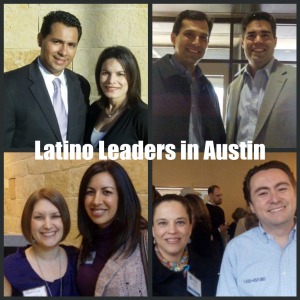
While this issue affects our community the most, not all Latinos live in poverty and even the ones living with this issue have the capability of giving back. Latinos are as diverse as the American melting pot. Latinos are U.S. born Americanos, Tejanos, immigrants, entreprenuers, professionals, middle-class, affluent, multicultural, young and old. And Latinos are contributors; they’re doing their part through formal and informal networks as volunteers, civic, business and community leaders. Latinos have a role to play in addressing this issue and organizations working in this area need to connect and engage with Latinos, in real ways. There are a wealth of opportunities but it’s going to take stepping outside of our bubbles (that goes for Latinos and the mainstream community), create understanding of the Latino experience and find opportunities to connect. We all care about the same things; let’s make the connections and get to work!
Adelante,
Mando
P.S. Need help with Latino Engagement? Email me at arayo@cultural-strategies.com and we’ll get started.
*Photo: Clockwise L2R: John-Michael & Priscilla Cortez, Raul Alvarez, Frank Garza, Theresa Alvarez, Maria Adame, Monica Peraza & Elias Hermida
Comments : Leave a Comment »
Tags: hispanic, hispanic engagement, hispanic outreach, latino, latino engagement, latino leaders, poverty, poverty data
Categories : Community Engagement, hispanic, latino leaders, latinos
